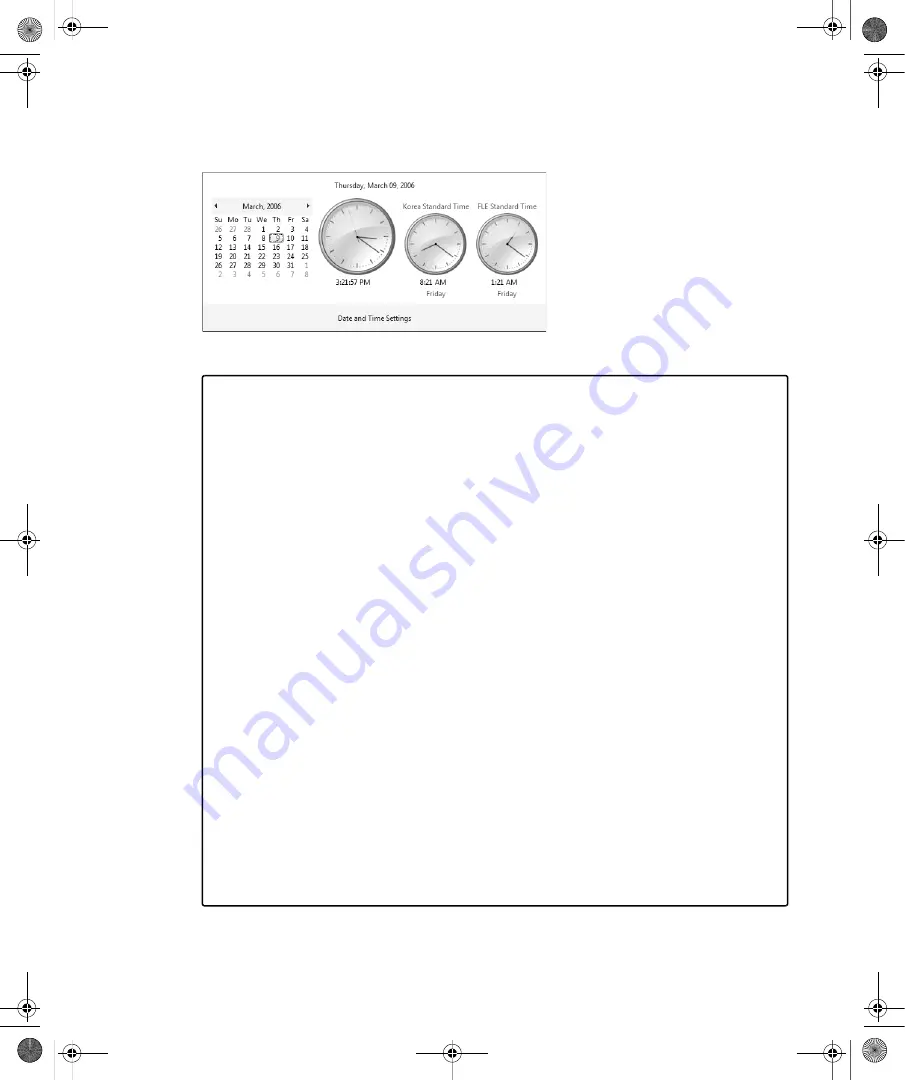
Chapter 2:
Working with Windows Vista
21
calendar. Time can be shown with a traditional clock or a digital clock, and if you click the
Date And Time Settings link, you can add up to two additional clocks for other time zones.
Figure 2-4
The system clock
From the experts
New ways to change the system time
Getting multiple clocks to display different time zones simultaneously is definitely
pretty cool, and definitely something a lot of people have asked me about. If you use
the time display as a cheap calendar—like I often do—you’ll be happy to know that
Windows Vista includes a full-blown calendaring program called Windows Calendar,
which you can start by clicking Start, pointing to All Programs, and clicking Windows
Calendar. Changing the system time is more involved than it used to be, however,
and you still need to have administrator privileges.
To change the time, you must click the clock in the notification area on the taskbar
and then click the Date And Time Settings link. In the Date And Time Properties
dialog box, click the Change Date And Time button to change the date and time, or
click Change Time Zone to change the time zone. After you change the date and
time or the time zone and click OK twice, the time is updated to reflect your
changes.
By default, Windows Vista automatically synchronizes system time with an
Internet time server once a week. The goal of synchronization is to ensure that system
time is as accurate as possible. By default, the time server used for synchronization is
time.windows.com. Although other time servers can be selected, businesses with net-
works might prefer to have computers synchronize with internal time servers. For more
information about configuring time and using Internet time servers, refer to
Microsoft
Windows Vista Administrator’s Pocket Consultant
(Microsoft Press, 2006).
William Stanek
Author, MVP, and series editor for the Microsoft Press Administrator’s Pocket Consultants
C02622841.fm Page 21 Wednesday, May 17, 2006 8:40 AM






























